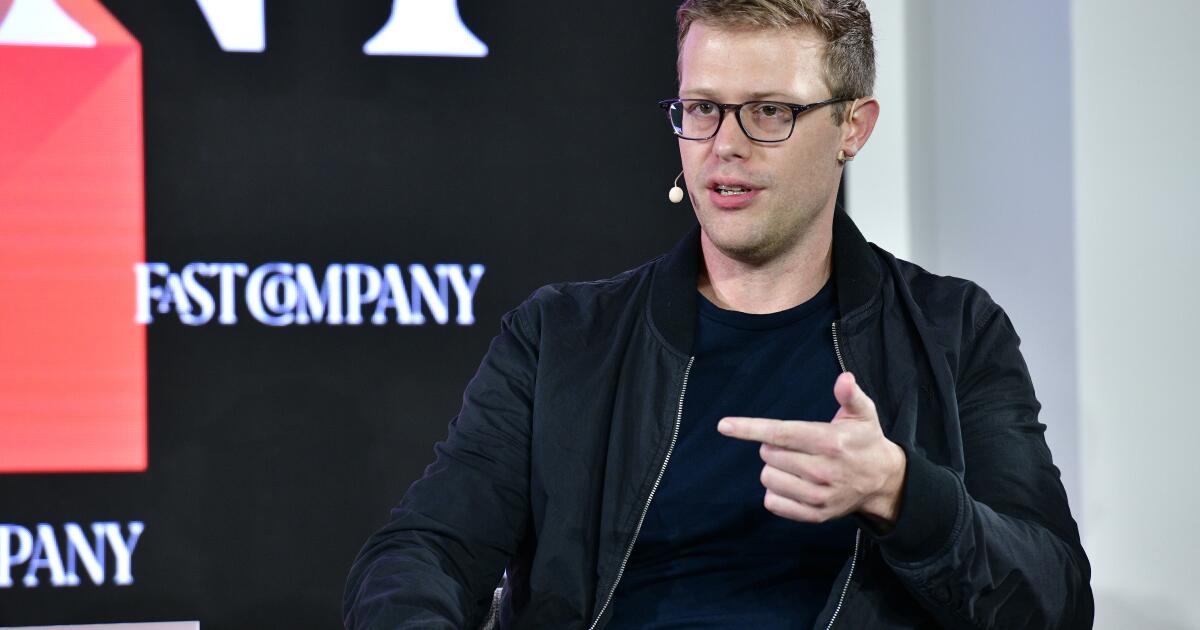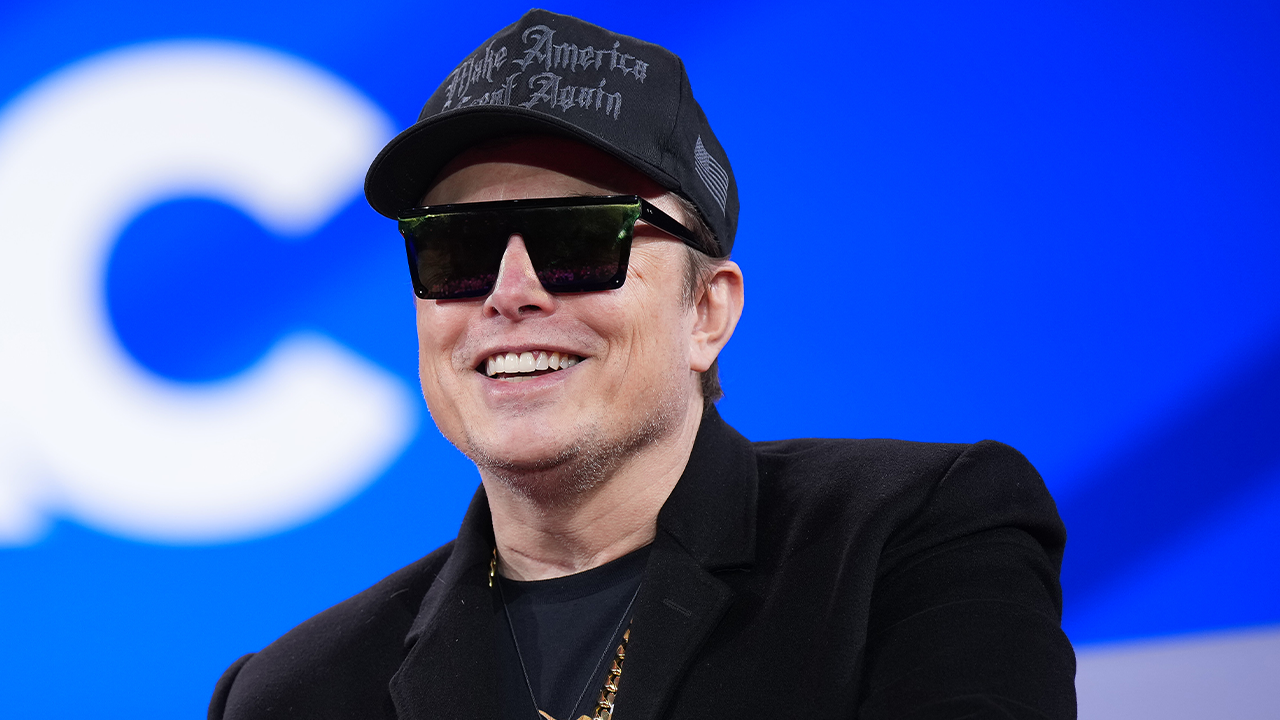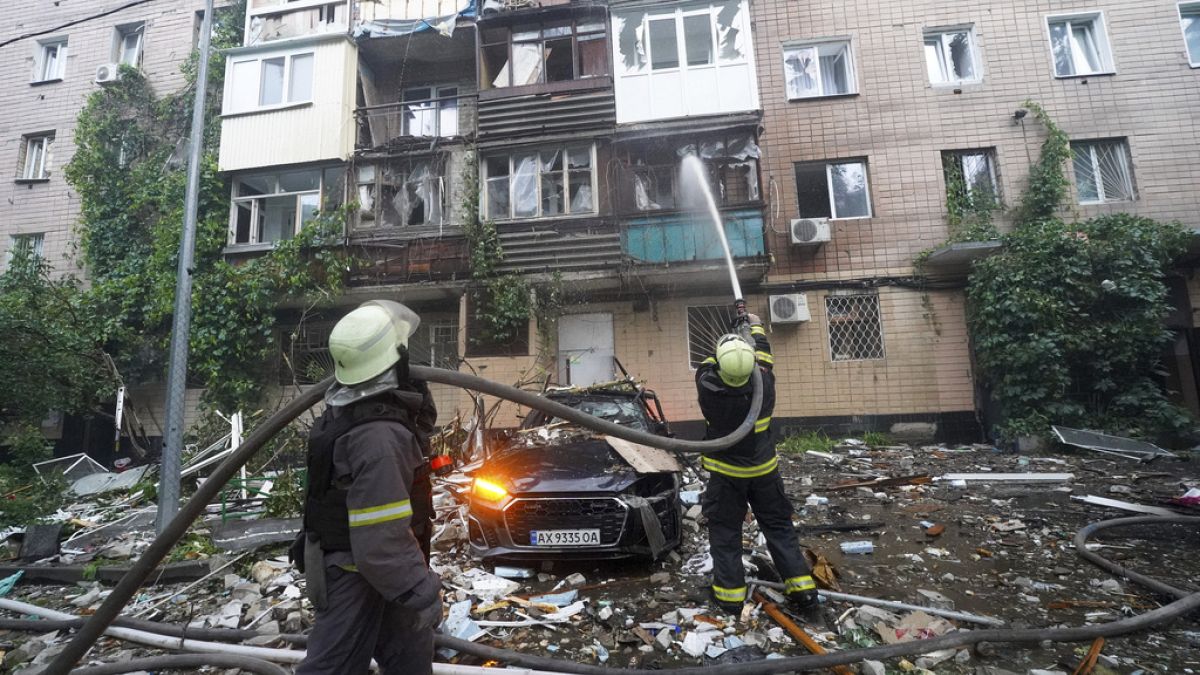Business
Column: Stanford throws a party for purveyors of misinformation and disinformation about COVID

We’re living in an upside-down world, aren’t we?
It’s a world in which scientists whose research findings that COVID-19 probably originated as a spillover from wildlife have been validated by dozens of scientific studies, but got them hauled before a Republican-dominated House committee to be brayed at by the likes of Reps. Jim Jordan (R-Ohio) and Marjorie Taylor Greene (R-Ga.) and accused of academic fraud.
Meanwhile, the purveyors of claims that COVID’s danger was overstated and could be met by exposing the maximum number of people to the deadly virus in quest of “herd immunity” have been offered a platform to air their widely debunked and refuted views at a forum sponsored by Stanford University.
This is awful, a full on anti-science agenda (and revisionist history), tone deaf to how this kind of rhetoric contributed to the deaths of thousands of Americans during the pandemic by convincing them to shun vaccines or minimize Covid.
— Vaccine expert and pseudoscience debunker Peter Hotez
The event is a symposium on the topic “Pandemic Policy: Planning the Future, Assessing the Past,” scheduled to take place on campus Oct. 4.
No one can doubt that a sober examination of the policies of the recent past with an eye toward doing better in the next pandemic is warranted. This symposium is nothing like that.
Most of its participants have been associated with discredited approaches to the COVID pandemic, including minimizing its severity and calling for widespread infection to achieve herd immunity. Some have been sources of rank misinformation or disinformation. Advocates of scientifically validated policies are all but absent.
The event is shaping up as a major embarrassment for an institution that prides itself on its academic standards. It comes with Stanford’s official imprimatur; the opening remarks will be delivered by its freshly appointed president, Jonathan Levin, an economist who took office Aug. 1.
The problem with the symposium starts with its main organizer. He’s Jay Bhattacharya, a Stanford professor of health policy. Bhattacharya is one of the original signers of the “Great Barrington Declaration,” a manifesto for herd immunity published in October 2020. The university didn’t respond to my question about Bhattacharya’s role. He didn’t respond to my request for comment.
The core of the declaration is what its drafters call “focused protection,” which means allowing “those who are at minimal risk of death to live their lives normally to build up immunity to the virus through natural infection, while better protecting those who are at highest risk” — chiefly seniors, who would be quarantined.
Focused protection, the promoters wrote, would allow society to achieve herd immunity and return to normalcy in three to six months.
The quest for herd immunity from COVID has several problems. One is that infection with one variant of this ever-evolving virus doesn’t necessarily confer immunity from other variants. Another problem is that COVID can be a devastating disease for victims of any age. Allowing anyone of any age to become infected can expose them to serious health problems.
Bhattacharya’s name doesn’t appear in the event announcement, but he has identified himself on X as its “main organizer.” Among the announced speakers is epidemiologist Sunetra Gupta of Oxford, another of the declaration’s original signers.
Several other speakers have advocated fewer restrictions on schools and businesses while predicting that COVID would be manageably mild, like the flu — predictions that were consistently and catastrophically wrong.
The date of the symposium, by the way, is the anniversary of the signing of the Great Barrington Declaration. It’s also Rosh Hashanah, one of the High Holy Days of the Jewish calendar. Stanford says the “overlap” with the holiday is regrettable, but it hasn’t offered to reschedule.
Stanford responded to my request for comment about the event by simply reproducing language from the event announcement.
“The conference was organized to highlight some of the many important topics that public health officials and policymakers will need to address in preparing for future pandemics,” the university said. “The speakers, including those already listed and others who will be added over the next several weeks, represent a wide range of views on this issue. We look forward to a civil, informed, and robust debate.”
That won’t do. Stanford’s argument that it’s merely providing a platform for “robust debate” among speakers with a “wide range of views” is belied by the roster of speakers, in which members of a discredited fringe of pandemic policy advocates are heavily overrepresented.
The event announcement has elicited skepticism and dismay among scientists seriously concerned about pandemic policy.
“Knowing who the speakers and panelists are,” wrote the veteran pseudoscience debunker David Gorski, “I know that ‘assessing the past’ will likely consist of highly revisionist history … claiming that public health interventions didn’t work.”
The description of some of the daylong symposium’s sessions should give one pause. The precis of a panel titled “Misinformation, Censorship, and Academic Freedom” states as fact that “governments censored information contrary to public health pronouncements in social media settings.” It asks rhetorically, “Does the suspension of free speech rights during a pandemic help keep the population better informed or does it permit the perpetuation of false ideas by governments?”
Yet who among the panel speakers lost their “free speech rights”? On the contrary, several, including Bhattacharya, have ridden their discredited claims to regular appearances on Fox News, op-eds in the Wall Street Journal and appointments to blue-ribbon government committees in red states.
A look at the speakers list should tell you where this event is heading. On a panel titled “Evidence-Based Decision Making During a Pandemic” is Anders Tegnell, the architect of Sweden’s pandemic policy. Sweden has been held up by critics of school closings and lockdowns and advocates of herd immunity as a success story, the theme being that by keeping schools and restaurants open, the country beat the pandemic.
The truth is just the opposite. As I’ve reported, the Tegnell record is disastrous. Sweden’s laissez-faire approach sacrificed its seniors to the pandemic and used its schoolchildren as guinea pigs. Swedish researchers concluded in retrospect that its policies were “morally, ethically, and scientifically questionable.” The death toll rose so high that the government was eventually forced to tighten up the rules.
Sweden’s death rate from COVID was much worse than that of its Nordic neighbors Denmark, Norway and Finland, which all took a tougher approach. If Sweden’s death rate had only matched Norway’s, it would have suffered only about 4,400 COVID deaths, rather than its toll of 18,500.
Then there’s Scott Atlas, a radiologist and former professor at Stanford medical school, who is currently a fellow at the Hoover Institution, the right-wing think tank housed on the Stanford campus.
Atlas was recruited to join the Trump White House as a COVID advisor in July 2020 after having volunteered to Medicare Administrator Seema Verma that the government’s pandemic policies were “a massive overreaction” that was “inciting irrational fear” in Americans.
Atlas estimated that the coronavirus “would cause about 10,000 deaths,” which “would be unnoticed” in a normal flu season. By the end of 2020, as it happens, COVID deaths in the U.S. exceeded 350,000. As of today, the toll is more than 1.2 million.
At the White House, Atlas promoted scientifically dubious prescriptions for the pandemic. He pushed for reduced testing for COVID and dismissed masking as a countermeasure. Most damaging, he called for a herd immunity policy.
Atlas’ prescriptions disturbed his Stanford colleagues, about 110 of whom wrote an open letter in September 2020 alerting the public to “the falsehoods and misrepresentations of science” that Atlas was preaching.
“Encouraging herd immunity through unchecked community transmission is not a safe public health strategy,” they wrote. “In fact, this approach would do the opposite, causing a significant increase in preventable cases, suffering and deaths, especially among vulnerable populations, such as older individuals and essential workers.”
The Stanford administration also formally disavowed Atlas’ statements and prescriptions. “Dr. Atlas has expressed views that are inconsistent with the university’s approach in response to the pandemic,” the university said. “We support using masks, social distancing, and conducting surveillance and diagnostic testing.”
Yet now Atlas appears to be back in the university’s good graces, judging from his presence on the roster. Stanford didn’t respond to my questions about Atlas’ role, and he didn’t reply to my request for comment.
Allowing this symposium to proceed along the lines laid out in the announcement will be a black mark for Stanford in the scientific community.
“What’s happening at Stanford?” asked vaccine expert and disinformation debunker Peter Hotez on X. “This is awful, a full on anti-science agenda (and revisionist history), tone deaf to how this kind of rhetoric contributed to the deaths of thousands of Americans during the pandemic by convincing them to shun vaccines or minimize COVID.”
Stanford’s claim to be a neutral host of a scientific symposium falls short as a fair description of its duties as an academic institution.
No university claims to be open to the expression of any or all views, no matter how unorthodox or counterfactual; they make judgments about the propriety of viewpoints all the time; the level of discernment they practice is one way we judge them as serious educational establishments.
By that standard, Stanford deserves an “F.” On the evidence, neither the university nor its medical school, which is a sponsor of the symposium, exercised any judgment at all before greenlighting an embarrassing gala for the pandemic fringe.

Business
Jobs at the Port of Los Angeles are down by half, executive director says

Job opportunities at the Port of Los Angeles are dwindling as President Trump’s steep tariffs take a hit on global trade and a major economic engine for the regional economy.
Nearly half of the longshoremen who support operations at the port went without work over the last two weeks, Gene Seroka, executive director of the Port of Los Angeles, said in an interview.
The port processed 25% less cargo than forecast for the month of May, he said.
Trump’s tariffs have drastically stemmed the flow of goods into the U.S., driving down activity at the neighboring ports of L.A. and Long Beach, which collectively processed more than 20 million 20-foot-long cargo units last year.
The two ports are the largest in the country and provide jobs for thousands of dockworkers, heavy equipment operators and truck drivers.
But work has fallen off sharply in recent weeks. Over the last 25 work shifts, only 733 jobs were available for 1,575 longshoremen looking for work.
“They haven’t been laid off, but they’re not working nearly as much as they did previously,” Seroka told The Times. “Since the tariffs went into place, and in May specifically, we’ve really seen the work go off on the downside.”
Marine terminal operators post available work opportunities, known as job orders, on a digital board at the port three times a day. Longshoremen can review the job orders at each shift and bid on the jobs they want to take. If there are more longshoremen than job orders, a portion of workers will go without pay.
The average of 733 job orders posted over the past 25 shifts, which is equal to roughly two weeks, is unusually low.
Ordinarily, between 1,700 and 2,000 job orders are posted during a typical day shift, and between 1,100 and 1,400 are posted during a standard night shift.
Seroka attributed the decrease in job opportunities to lower cargo volume moving through the port.
In May, 17 cargo ships canceled their planned trips to Los Angeles amid uncertainty over duties the Trump administration imposed worldwide.
Although May is typically a busier month than April, this past May saw 18% less cargo processed than the month prior, according to port data.
The falloff comes during a critical time in advance of the Christmas shopping season, orders for which are usually placed before July 1.
Conditions are not expected to significantly improve anytime soon.
“The June numbers that we’re projecting right now are nowhere near where they traditionally should be,” Seroka said.
An average of five ships have entered the port each day over the last week. This time of year, there would typically be between 10 and 12 ships in the port each day.
“The drop in cargo volume caused by Trump’s tariffs will mean empty shelves when products don’t reach our stores, rising prices on everything from groceries to clothes to cars, and undoubtedly, more Americans out of work,” U.S. Sen. Alex Padilla of California said in a news conference last month.
The decline in shipping has broader ripple effects on L.A.’s logistics economy.
A 2023 report found that the ports of Los Angeles and Long Beach contributed $21.8 billion in direct revenue to local service providers, generating $2.7 billion in state and local taxes and creating 165,462 jobs, directly and indirectly.
A decline of just 1% in cargo to the ports would wipe away 2,769 jobs and endanger as many as 4,000 others, the study found.
Union officials could not be reached for comment on Friday but had previously predicted job losses for their members.
“Some of the workforce will not be getting their full 40 hours a week based on the loss of cargo,” Gary Herrera, president of the longshoremen union ILWU Local 13, warned last month.
“That is going to have an effect on the work opportunities for not just us, but for truck drivers, warehouse workers and logistics teams,” he said.
The slowdown in activity at the ports of L.A. and Long Beach has also spread into surrounding communities. Businesses in the area rely on a robust community of port workers to frequent their establishments.
“We’re starting to hear from small businesses and restaurants in the harbor area that their customer patronage is trending downward,” Seroka said. “Outside of COVID, this is the biggest drop I’ve seen in my career.”
Business
Venture capital investment is rising in Los Angeles — and not just for AI startups

Early this year, private equity firm Blackstone bet big on the future of artificial intelligence by investing $300 million in a Chatsworth company that’s been around for more than two decades.
The company, DDN, helps businesses store and manage the massive trove of data that powers AI systems — the lifeblood needed for chatbots, self-driving cars and more. DDN’s high-profile customers include chipmaker Nvidia, Elon Musk’s AI startup xAI, Google Cloud and Ford. DDN, short for DataDirect Networks, has roughly 1,000 employees.
“They have a trillion dollars of assets under management, and it’s a company that we thought would really move the needle for us in terms of extending our reach,” said Jyothi Swaroop, DDN’s chief marketing officer.
The investment was among the largest this year in the Greater Los Angeles region, which remains a hot spot for investments in both old and new tech companies poised for growth.
All told, venture capital investors and private equity firms poured $3.1 billion to fund 144 deals in the L.A. area in the first quarter of this year, up 15% from a year ago, according to research firm CB Insights. The area encompasses Los Angeles, Ventura, Orange, Riverside and San Bernardino counties.
While investment levels can fluctuate, funding in the greater L.A. region has steadily increased since 2023, when investment cooled following the collapse of the cryptocurrency exchange FTX.
Along with AI, investors also financed startups and established businesses in healthcare, e-commerce and defense technology, underscoring how investment in the L.A. market has diversified in recent years beyond ad tech businesses and video apps.
“Today it’s going into much more ambitious projects,” Mark Suster, a general partner at Santa Monica-based Upfront Ventures. “It’s going into satellites, alternate energy, national defense, drones, shipbuilding and pharmaceutical drug discovery. So it’s a lot more exciting than it ever has been.”
Los Angeles-area companies that received the most money in the first quarter include Torrance-based defense company Epirus with $250 million; and Thousand Oaks-based Latigo Biotherapeutics, which received $150 million, according to CB Insights. Latigo Biotherapeutics develops non-opioid pain treatments, while Epirus makes technology that helps defend against attacks from drone swarms.
Economic consulting firm Econic Partners raised the most funding with $438 million, according to CB Insights, which relied on a report filed with the U.S. Securities and Exchange Commission. Econic disputed the total, saying it raised nine figures in the first quarter, but the company declined to say how much.
Masha Bucher, founder and general partner at Day One Ventures, said she views El Segundo as the most promising hub for “deep tech” startups tackling complex issues, such as, water scarcity.
Businesses in the L.A. area have access to a highly qualified workforce from aerospace and defense tech companies. The tech hub known as Silicon Beach also is close to the airport, making it easy for entrepreneurs to hop on a plane to raise funding in San Francisco.
“There is a power of community, and it’s definitely like a power spot on the map,” Bucher said. The firm’s investments include various AI startups and an eye-scanning crypto project backed by OpenAI’s Sam Altman in which people verify they’re human.
Investors aren’t interested in only AI, however. Culver City-based Whatnot raised $265 million, one of the biggest deals in the L.A. area this year. The live shopping app allows people to buy and sell items such as clothing and collectibles. Potential customers can ask questions about products in real-time, find deals and bid for products shown in live videos.
Whatnot says it surpassed more than $3 billion in sales in 2024, and the company expects that figure to double this year. The startup, founded in 2019, says it isn’t profitable yet, but the TikTok rival has shown investors it’s growing fast.
“Live and social shopping has the potential to be an absolutely monstrous market,” Whatnot Chief Executive Grant LaFontaine said.
The company has roughly 750 employees across the United States and Europe. The funding will help market Whatnot to attract more users and hire people to improve the shopping experience, he said.
Like other businesses, Whatnot uses AI for customer service and to moderate content on the platform.
“I tend to be sort of a purist, which is that consumers don’t care about AI. They care about problems being solved,” LaFontaine said.
Businesses have been using AI long before the rising popularity of chatbots such as ChatGPT that can generate text, images and code.
But the frenzy surrounding what’s known as generative AI has meant that various industries are confronting how technology will disrupt the way they live and work.
Not surprisingly, investor interest in AI drove much of the nation’s venture capital commitments in the first quarter. San Francisco-based OpenAI secured the largest funding round of $40 billion, placing its valuation at $300 billion, according to CB Insights.
“There’s a ton of opportunity to rewrite the playing field on which people do business in everything from across verticals, across industries,” said Jason Saltzman, head of insights for CB Insights. “Everyone recognizes the promise, and … no one wants to miss out on the promise.”
Globally, $121 billion of venture capital was raised in the first quarter, with 20% of the deals received by AI companies — the highest amount ever, according to CB Insights. Nationally, $90.5 billion in venture capital was raised last quarter, with the bulk of the money going toward startups in Silicon Valley, which brought in $58.9 billion, the research firm said.
San Francisco has experienced a surge in AI startups expanding or opening up offices, drawn to the city’s swath of talent and the Bay Area’s universities. AI leaders including OpenAI and Anthropic also are based there.
OpenAI said it would use the money raised in the first quarter toward building its tools and investing in talent.
“People understand that this is a transformative technology,” said Chris Lehane, OpenAI’s vice president of global affairs in an interview. “It’s going to permeate virtually every aspect of life.”
Silicon Valley remains the far leader in venture capital AI investments, but other cities such as New York have attracted AI funding. There’s also global competition from countries such as China. As legislators weigh whether to introduce laws that could regulate AI, some tech lobbying groups have raised concerns on how those bills could affect innovation in the state.
Suster said he doesn’t think venture capital dollars will leave California.
“The opportunity set is so great here,” Suster said. “Do we occasionally get backwards-looking bills that try to overregulate how industry works in California? Of course, we do. We find ways to work around them.”
Business
Paramount chair Shari Redstone has been diagnosed with thyroid cancer

Paramount Global chairwoman and controlling shareholder Shari Redstone is battling cancer as she tries to steer the media company through a turbulent sales process.
“Shari Redstone was diagnosed with thyroid cancer earlier this spring,” her spokeswoman Molly Morse said late Thursday. “While it has been a challenging period, she is maintaining all professional and philanthropic activities throughout her treatment, which is ongoing.
“She and her family are grateful that her prognosis is excellent,” Morse said.
The news comes nearly 11 months after Redstone agreed to sell Paramount to David Ellison’s Skydance Media in a deal that would end the family’s tenure as major Hollywood moguls.
However, the government’s review of the Skydance sale hit a snag amid President Trump’s $20-billion lawsuit against Paramount subsidiary CBS over edits to an October “60 Minutes” broadcast.
Redstone, 71, told the New York Times that she underwent surgery last month after receiving the diagnosis about two months ago. Surgeons removed her thyroid gland but did not fully eradicate the cancer, which had spread to her vocal cords, the paper said.
She continues to be treated with radiation, the paper reported.
The Redstone family controls 77% of the voting shares of Paramount. Her father, the late Sumner Redstone, built the company into a juggernaut but it has seen its standing slip in recent years. There have been management missteps and pressures brought on by consumers’ shift to streaming. The trend has crimped revenue to companies that own cable channels, including Paramount.
Redstone has wanted to settle the lawsuit Trump filed in October, weeks after “60 Minutes” interviewed then-Vice President Kamala Harris. Trump accused CBS of deceptively editing the interview to make Harris look smarter and improve her election chances, a charge that CBS has denied.
The dispute over the edits has sparked unrest within the company, prompted high-level departures and triggered a Federal Communications Commission examination of alleged news distortion.
The FCC’s review of the Skydance deal has become bogged down. If the agency does not approve the transfer of CBS television station licenses to the Ellison family, the deal could collapse.
The two companies must complete the merger by early October. If not, Paramount will owe a $400-million breakup fee to Skydance. Redstone, through the family’s National Amusements Inc., also owes nearly $400 million to a Chicago banker and tech titan Larry Ellison, who is helping bankroll the buyout of Paramount and National Amusements.
-

 News1 week ago
News1 week agoVideo: Faizan Zaki Wins Spelling Bee
-

 Politics7 days ago
Politics7 days agoMichelle Obama facing backlash over claim about women's reproductive health
-

 News1 week ago
News1 week agoVideo: Harvard Commencement Speaker Congratulates and Thanks Graduates
-

 Politics1 week ago
Politics1 week agoMusk officially steps down from DOGE after wrapping work streamlining government
-

 Technology1 week ago
Technology1 week agoAI could consume more power than Bitcoin by the end of 2025
-

 News1 week ago
News1 week agoPresident Trump pardons rapper NBA YoungBoy in flurry of clemency actions
-

 Technology1 week ago
Technology1 week agoSEC drops Binance lawsuit in yet another gift to crypto
-

 Technology1 week ago
Technology1 week agoOpenAI wants ChatGPT to be a ‘super assistant’ for every part of your life















